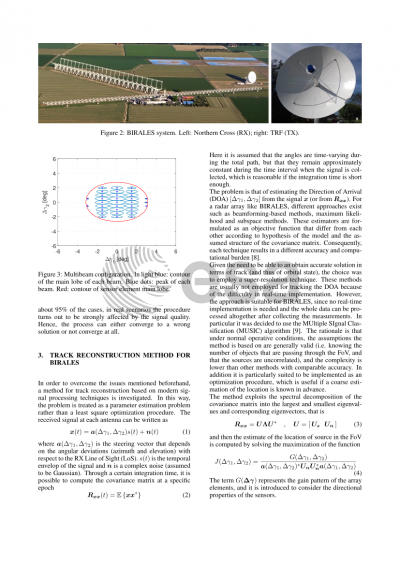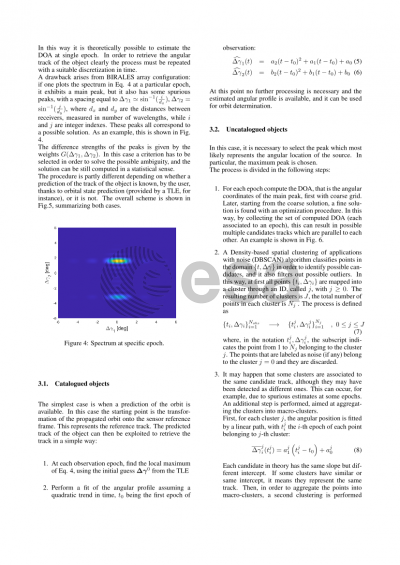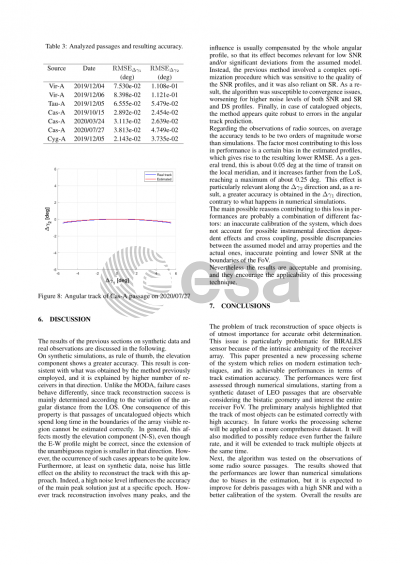Document details

Abstract
In the last decades, space debris have become one of the main concerns for space agencies and institutions all around the world and various initiatives have been started to tackle this issue. Within this framework, ground-based sensors (optical or radar) are typically used to track in-orbit objects, providing a fundamental service to Space Surveillance and Tracking (SST) related activities. Italy contributes to the EUSST initiative with the BIstatic RAdar for LEo Survey (BIRALES), whose transmitter is the Radio Frequency Transmitter (TRF), located at the Italian Joint Test Range of Salto di Quirra (PISQ) in Sardinia, and whose receiver is a portion of the Northern Cross Radio Telescope, located at Medicina Radio Astronomical Station, near Bologna.
Based on the multi-receiver configuration of the Northern Cross, BIRALES Field of View (FoV) can be populated with many independent beams, such that, during a passage, beam illumination sequence theoretically allows to estimate the angular path of the transiting object and so to perform orbit determination. However, due to array geometry, multiple grating lobes in the receiver gain pattern are simultaneously present and it is not straightforward to link the beam illumination with a precise position in the FoV. An optimization procedure was developed to solve such an ambiguity by adequately processing Signal to Noise Ratio (SNR) and slant range profiles. Unfortunately, the procedure turns out to be strongly affected by the signal quality.
The present work deals with the angular track reconstruction problem for BIRALES through the application of MUltiple SIgnal Classification (MUSIC) algorithm, which, for any time instant, returns an estimate of Direction Of Arrival (DOA). This estimate is based on signal Auto Correlation Matrixes (ACM), provided by the multi-receiver architecture. Hence, by collecting the DOAs for the whole passage and identifying proper criteria to solve the yet present ambiguities, it is possible to reconstruct the track without any need of slant range information.
First, the methodology is applied to a synthetic dataset of 899 LEO passages. In case of correlated measurements, the available ephemerides can be exploited to avoid lobe ambiguity, granting 100% convergence rate to the exact track with an accuracy of about 6.5e-4 deg; furthermore, the method appears to be robust to prediction uncertainties. For uncorrelated measurements, multiple angular track candidates are generated due to lobe ambiguity, and the correct one is selected based on a clustering algorithm and a convergence rate analysis. The resulting process converges to the correct angular track in more than 98% of the analysed passages and the accuracy is comparable to that achieved on correlated measurements. All failures concern passages crossing the FoV far from the receiver line of sight.
Secondly, real data concerning observations of strong astronomical radio sources are processed. This is an intermediate step taken before moving to real data from resident space objects passages. The analysis shows that the convergence to the correct track is always achieved, with an accuracy of about 1e-2 deg, which is expected to improve for larger SNR levels.
Preview









